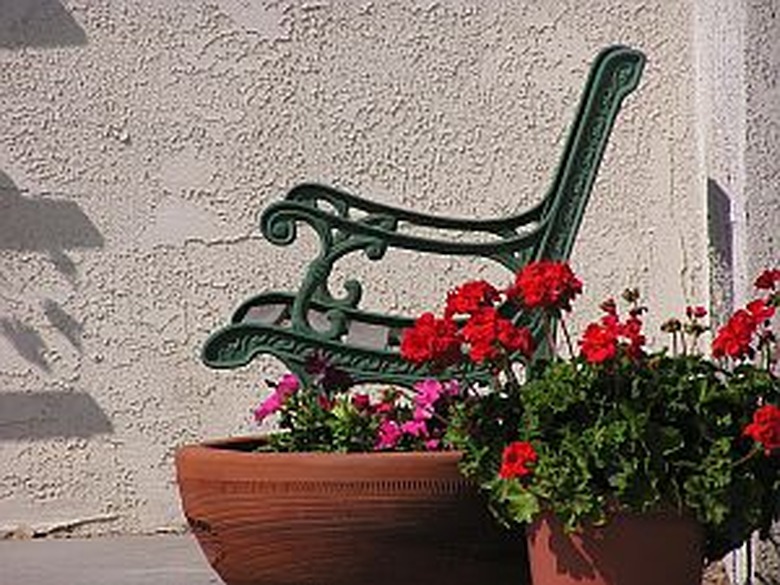How To Care For Geranium Flowers
Things Needed
- Compost
- Garden spade
- Rake
- Trowel
- Geranium seedlings
- Liquid fertilizer (20-20-20)
- Containers
- Potting soil
Tip
Some gardeners with proper basement environments can successfully store bare-root geraniums over the winter. Remove the geraniums from the outdoor soil, shake all the soil from the roots, and hang them from rafters in a basement. The relative humidity must be between 85 and 90 percent, and the temperature must be between 50 and 55 degrees. Replant the geraniums the following spring.
Geraniums are a common, yet beautiful, garden flower that will perform with profuse blooms over an entire growing season. The traditional geranium has deep-red blossoms, although there are other colors, as well. A newer geranium variety has ivy leaves that trail attractively out of a container and look beautiful when in a hanging basket. Geraniums grow hardily in a variety of soils. Many gardeners save geraniums over the winter months by digging them up and bringing them inside.
Step 1
Select a sunny growing area, and plant in the spring after the threat of frost has passed. Work the soil with the spade down to a depth of at least six inches, and add two inches of compost to the top of the soil. With the spade, work the compost into the garden soil well, and then rake the soil smooth.
- Geraniums are a common, yet beautiful, garden flower that will perform with profuse blooms over an entire growing season.
Step 2
Dig holes for the geranium seedlings so they will be at the same depth or slightly more shallow than they were in their temporary containers. This will help avoid stem rot in the geranium seedlings. Space the geranium plants eight to 12 inches apart in a flowerbed. Firm the soil gently around the newly planted seedlings, and water generously.
Step 3
Water the geraniums regularly if adequate rain does not fall. Fertilize geraniums once or twice per month by mixing the fertilizer with water according to package recommendations. Always give plain water after fertilizing geraniums to ensure the roots do not burn. Wash off any fertilizer that touches foliage.
- Dig holes for the geranium seedlings so they will be at the same depth or slightly more shallow than they were in their temporary containers.
- Always give plain water after fertilizing geraniums to ensure the roots do not burn.
Step 4
Remove faded blossoms and pinch back stems that grow long and leggy. This will help the geranium plants stay bushy and attractive.
Step 5
Dig up the geranium plants in early autumn. Trim the plants back by approximately half, and plant them in containers filled with fresh potting soil. Place the potted geraniums in a sunny location during the winter. Move the geraniums back outside the following spring.
